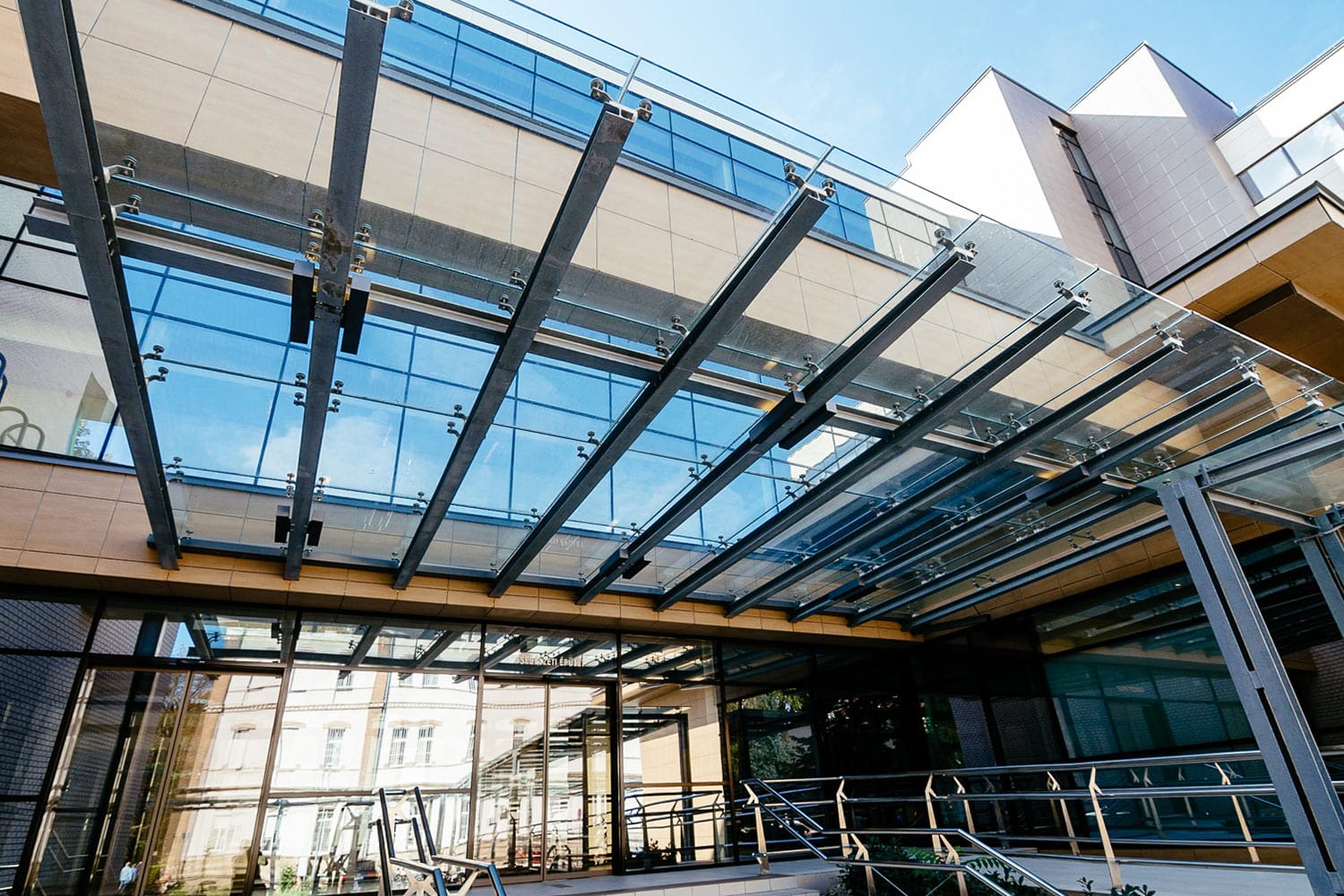A glass canopy is a structure made of glass panels that provides overhead coverage and protection from the elements. It is commonly used in architectural design to create covered walkways, entrances, or outdoor spaces such as terraces or atriums.
Glass canopies offer several advantages. They allow natural light to penetrate the covered area, creating a bright and open atmosphere. The transparent nature of glass also maintains a visual connection with the surroundings, providing an unobstructed view of the outside environment.
In addition to aesthetics, glass canopies provide shelter from rain, snow, and UV radiation while still allowing people to enjoy the outdoor space. The use of tempered or laminated glass ensures durability and safety, as these types of glass are designed to withstand impact and minimize the risk of injury in case of breakage.
Glass canopies can be supported by a variety of structures, including metal frames, steel cables, or tension systems, depending on the design and architectural requirements. The choice of support structure depends on factors such as the size and shape of the canopy, local building codes, and the desired aesthetic effect.
Overall, glass canopies are a popular architectural feature that combines functionality and aesthetics, providing shelter while enhancing the visual appeal of a building or outdoor space.


